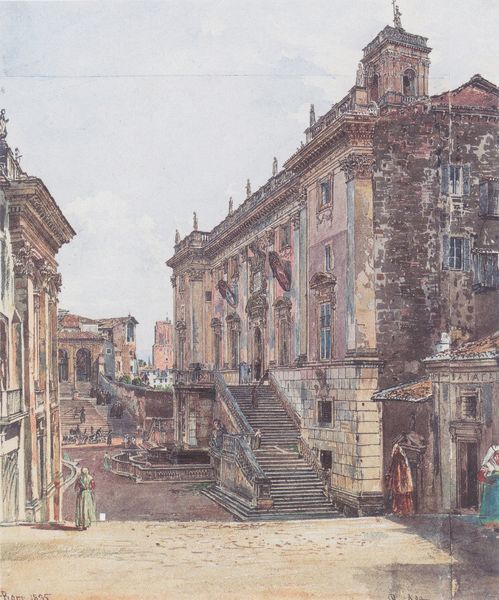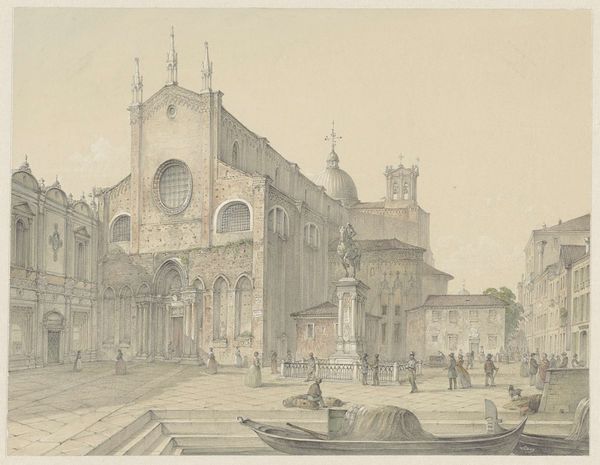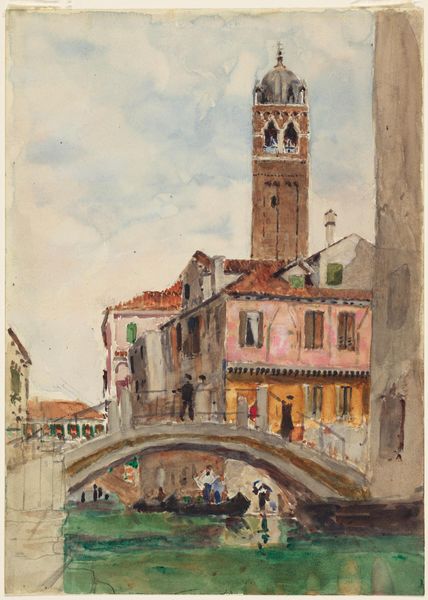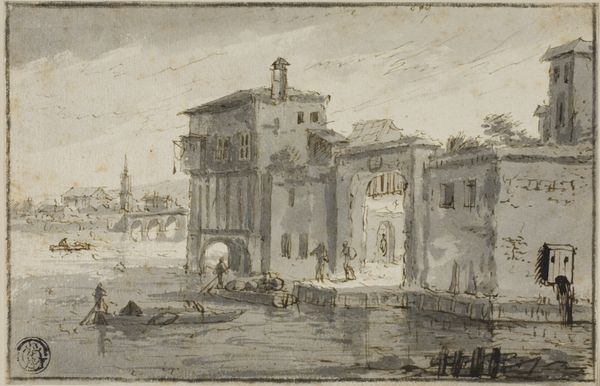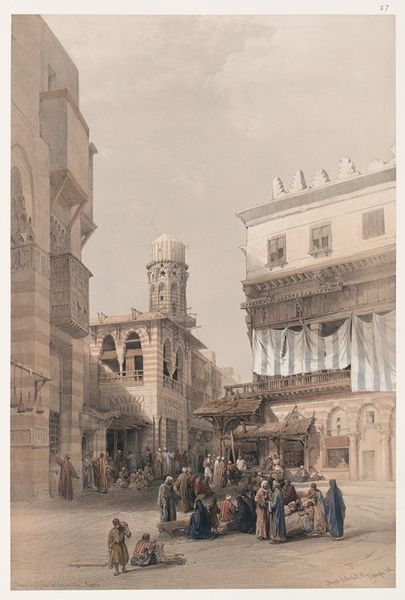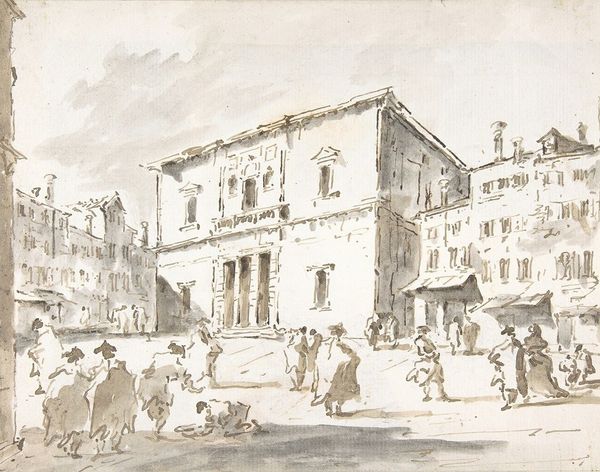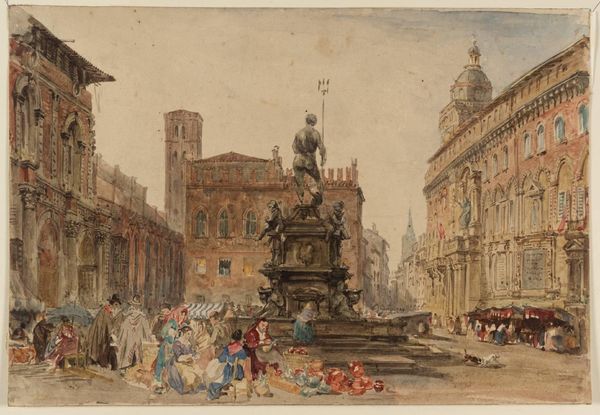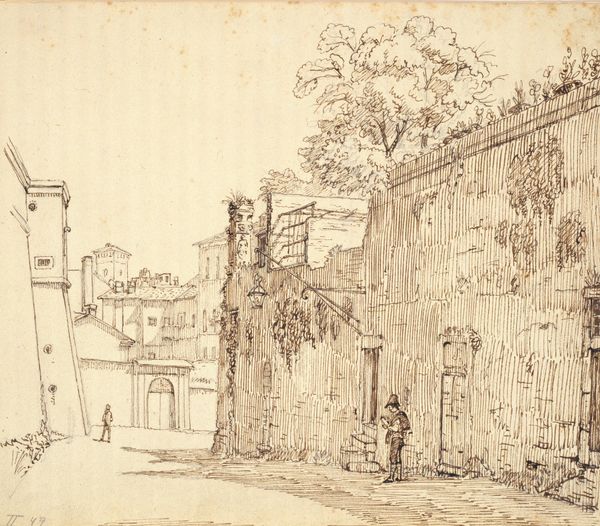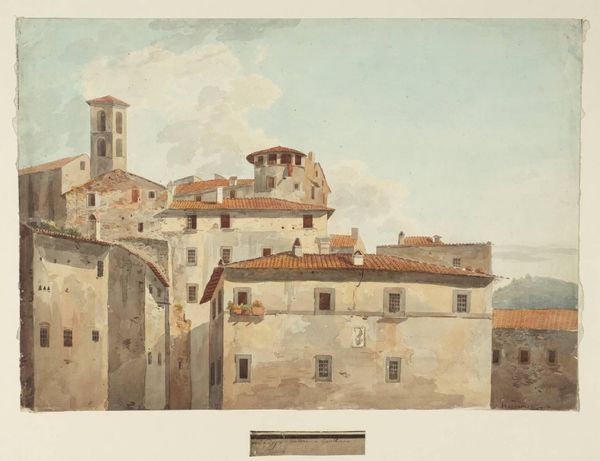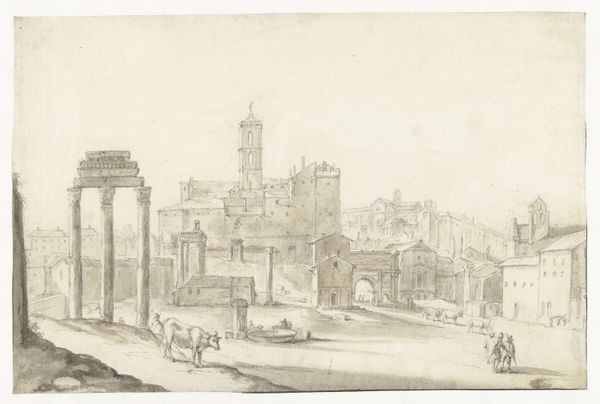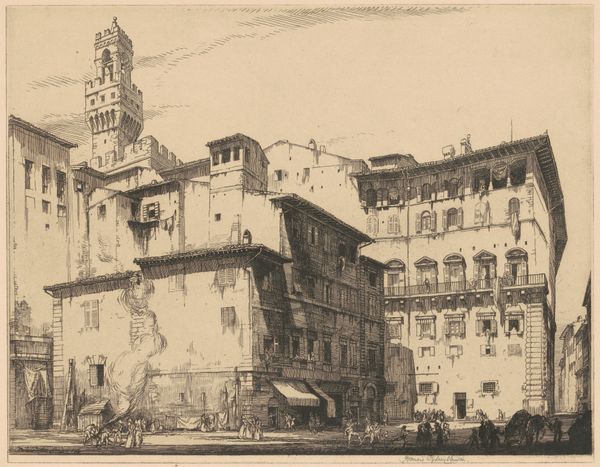
Dimensions: support: 206 x 265 mm
Copyright: CC-BY-NC-ND 4.0 DEED, Photo: Tate
Curator: This is Richard Parkes Bonington's watercolor, "Verona, Piazza dell’Erbe," housed here at the Tate. Editor: It feels so fleeting, almost like a memory. The way the architecture rises above the bustling marketplace—a poignant snapshot. Curator: Bonington captures the piazza’s vibrant atmosphere. But what is he saying about the power structures at play in the 19th century? Editor: Absolutely, it's a space where commerce and community intersect under the watchful eyes of those grand buildings, hinting at the socio-economic dynamics of the era. The red banners really catch my eye too. Curator: Indeed, there’s a certain tension between the everyday and the monumental. And Bonington's loose brushstrokes add to that sense of the transient. Editor: Right, it’s a reminder that even seemingly timeless spaces are shaped by the forces of history and the lives of the people who inhabit them. Curator: So true, seeing it in this light really enhances my understanding. Editor: It does invite you to consider the narratives that are interwoven within even a seemingly simple scene.
Comments
tate 8 months ago
⋮
http://www.tate.org.uk/art/artworks/bonington-verona-piazza-dellerbe-t08146
Join the conversation
Join millions of artists and users on Artera today and experience the ultimate creative platform.
tate 8 months ago
⋮
Bonington was trained in France, and indeed spent morst of his short life there. His father had moved the family from Nottingham to Calais to set up a lace-manufacturing business when Bonington was still a teenager. Bonington's fellow artists greatly admired his watercolours for their sureness of touch and sparkling luminosity. Some of the finest of them relate to a tour he made in northern Italy in 1826 with his patron Baron Charles Rivet. This example shows one of Verona's famous squares, enlivened with market stalls. It reveals the impressive range of Bonington's technique: vivacious underdrawing and rich contrasts of colour; fine strokes of the brush for structure and accent (his so-called 'touche coquette'); and broken wash layers of dry colour. Gallery label, August 2004
